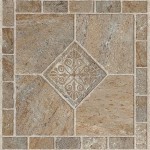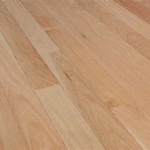Standard Sizes of Floor Tiles: A Comprehensive Guide
Choosing the right floor tiles is a crucial step in any construction or renovation project. Beyond aesthetics, the size of the tiles significantly impacts the overall look, functionality, and installation process. Standard floor tile sizes offer a balance of cost-effectiveness, ease of handling, and visual appeal. Understanding these standard dimensions is essential for architects, interior designers, contractors, and homeowners alike.
The term "standard" in tile sizing refers to dimensions that are commonly manufactured and widely available in the market. While variations exist to cater to specific design preferences, these standard sizes often provide the most economical and practical options. They simplify the planning process, reducing waste and ensuring compatibility with commonly available installation tools and accessories.
This article delves into the various standard sizes of floor tiles, exploring their common applications, advantages, and considerations for selecting the optimal size for a given space. It will also touch upon less common, but still relevant, tile sizes and their specialized uses.
Understanding Common Square Tile Sizes
Square tiles are one of the most popular and versatile shapes for floor coverings. Their uniform geometry allows for various layout patterns and lends a clean, symmetrical aesthetic to any room. Several standard square tile sizes are readily available, each suited for different applications and room sizes.
4x4 Inch Tiles: These small tiles, also referred to as mosaic tiles, are frequently used in bathrooms, particularly for shower floors and walls. Their small size provides excellent grip, making them ideal for wet areas. They are also commonly used for creating intricate patterns and designs.
6x6 Inch Tiles: Slightly larger than 4x4 tiles, 6x6 inch tiles offer a slightly more streamlined look while still maintaining good slip resistance. They are often used in smaller bathrooms, kitchens, and entryways.
12x12 Inch Tiles: This is a very common and versatile size, suitable for a wide range of spaces. 12x12 tiles are frequently seen in kitchens, bathrooms, hallways, and even small living areas. They strike a good balance between manageability during installation and coverage per tile.
18x18 Inch Tiles: Larger 18x18 inch tiles are often favored in medium-sized rooms like living rooms, dining rooms, and larger bedrooms. They create a more expansive feel due to fewer grout lines and can make a space appear larger.
24x24 Inch Tiles: These large-format tiles are gaining popularity for their modern and minimalist aesthetic. They are best suited for large, open spaces such as living rooms, lobbies, and commercial areas. The reduced number of grout lines contributes to a seamless and sophisticated look, but requires a very level subfloor for proper installation and prevents lippage.
Exploring Standard Rectangular Tile Sizes
Rectangular tiles offer a different visual dynamic than square tiles. Their elongated shape can be used to create optical illusions, making a room appear longer or wider. They are also commonly used to mimic the look of hardwood flooring. Understanding the standard rectangular tile sizes is crucial for achieving the desired aesthetic and functionality.
6x12 Inch Tiles: These tiles are a common choice for backsplashes in kitchens and bathrooms, as well as for shower walls. Their rectangular shape allows for various installation patterns, such as brick or herringbone, adding visual interest to the space.
12x24 Inch Tiles: This is one of the most popular rectangular tile sizes, offering a contemporary and elegant look. They are frequently used in bathrooms, kitchens, and hallways, and can be installed both horizontally and vertically to achieve different visual effects. When installed vertically, they can make a ceiling appear higher.
16x32 Inch Tiles: These larger rectangular tiles are often used in larger spaces to create a seamless and modern look. They are well-suited for living rooms, dining rooms, and commercial spaces, and can be used to mimic the appearance of large planks of wood or stone.
8x48 Inch Tiles (Plank Tiles): These are long, narrow tiles designed to resemble hardwood planks. They are widely used to create a wood-look floor in areas where hardwood might not be suitable, such as bathrooms and kitchens. They offer the aesthetic appeal of wood with the durability and water resistance of tile.
Factors to Consider When Choosing Tile Size
Selecting the right tile size involves more than just personal preference. Several factors should be taken into account to ensure a successful and aesthetically pleasing installation. These factors include room size, grout line considerations, material type, and installation complexity.
Room Size and Proportion: The size of the tile should be proportional to the size of the room. Using small tiles in a large room can create a busy and disjointed look, while using large tiles in a small room can make the space feel cramped. Generally, larger rooms benefit from larger tiles, while smaller rooms may be better suited for smaller to medium-sized tiles.
Grout Line Considerations: Grout lines play a significant role in the overall aesthetic of a tiled floor. Smaller tiles have more grout lines, which can create a more textured and patterned look. Larger tiles have fewer grout lines, resulting in a smoother and more seamless appearance. The color and width of the grout lines can also significantly impact the final look. Dark grout lines will make the tile pattern more prominent, while lighter grout lines will blend the tile together.
Material Type: The type of tile material can also influence the choice of size. Ceramic and porcelain tiles are available in a wide range of sizes, while natural stone tiles may have more limited options due to the inherent variations in the material. The size of the tile can also affect its structural integrity, with larger tiles potentially being more prone to cracking or chipping if not properly installed.
Installation Complexity: Larger tiles require a more level subfloor and precise installation to prevent lippage (uneven edges between tiles). They also require more specialized tools and skills to handle and cut. Smaller tiles are generally easier to install, especially for DIY projects, but require more time and effort to lay out and grout. The expertise of the installer should be considered when selecting tile size.
Subfloor Condition: The condition of the subfloor is a critical factor in determining the appropriate tile size. A perfectly level and stable subfloor is crucial for installing large-format tiles. Uneven or unstable subfloors can lead to cracked tiles and other installation problems. Smaller tiles are more forgiving of minor imperfections in the subfloor.
Cost Considerations: While the cost per tile may be lower for smaller tiles, the overall cost of installation can be higher due to the increased labor required. Larger tiles may have a higher cost per tile, but the reduced labor costs can offset this difference. Waste is also a factor to consider, as larger tiles may result in more waste if the room is not perfectly square. It's recommended to calculate the total cost of the project, including materials and labor, before making a final decision.
Pattern and Design: The desired pattern and design will also influence the choice of tile size. Complex patterns, such as herringbone or basketweave, often require smaller tiles. Simpler patterns, such as straight lay or offset, can be achieved with larger tiles providing a more contemporary aesthetic.
In summary, selecting the appropriate floor tile size requires careful consideration of various factors, including room size, grout line preferences, material type, installation complexity, subfloor condition, cost considerations, and desired pattern. By carefully evaluating these factors, it is possible to choose the tile size that best meets the specific needs and aesthetic preferences of the project.

Sheldon Slate Products Company Inc Monson Maine Middle Granville New York Honing The Natural Beauty Of Since 1917

Best Tiles For Floor Guide To Select

Spanish Floor Tile Avente

What Are The Standard Sizes Of Tiles Available In Market Theconstructor Org

Knowyourtiles Tile Types Sizes News Events Hafary

A Simple Guide To Types Of Tiles From Morbi

Tile Sizes Provided By Facings Of America

How To Lay A Ceramic Or Porcelain Tile Floor Step By

Large Size Porcelain Tiles Up To 120x240 Cm By Ceramiche Caesar

Carpet Tiles And Wall To The Differences Advantages Tapibel








